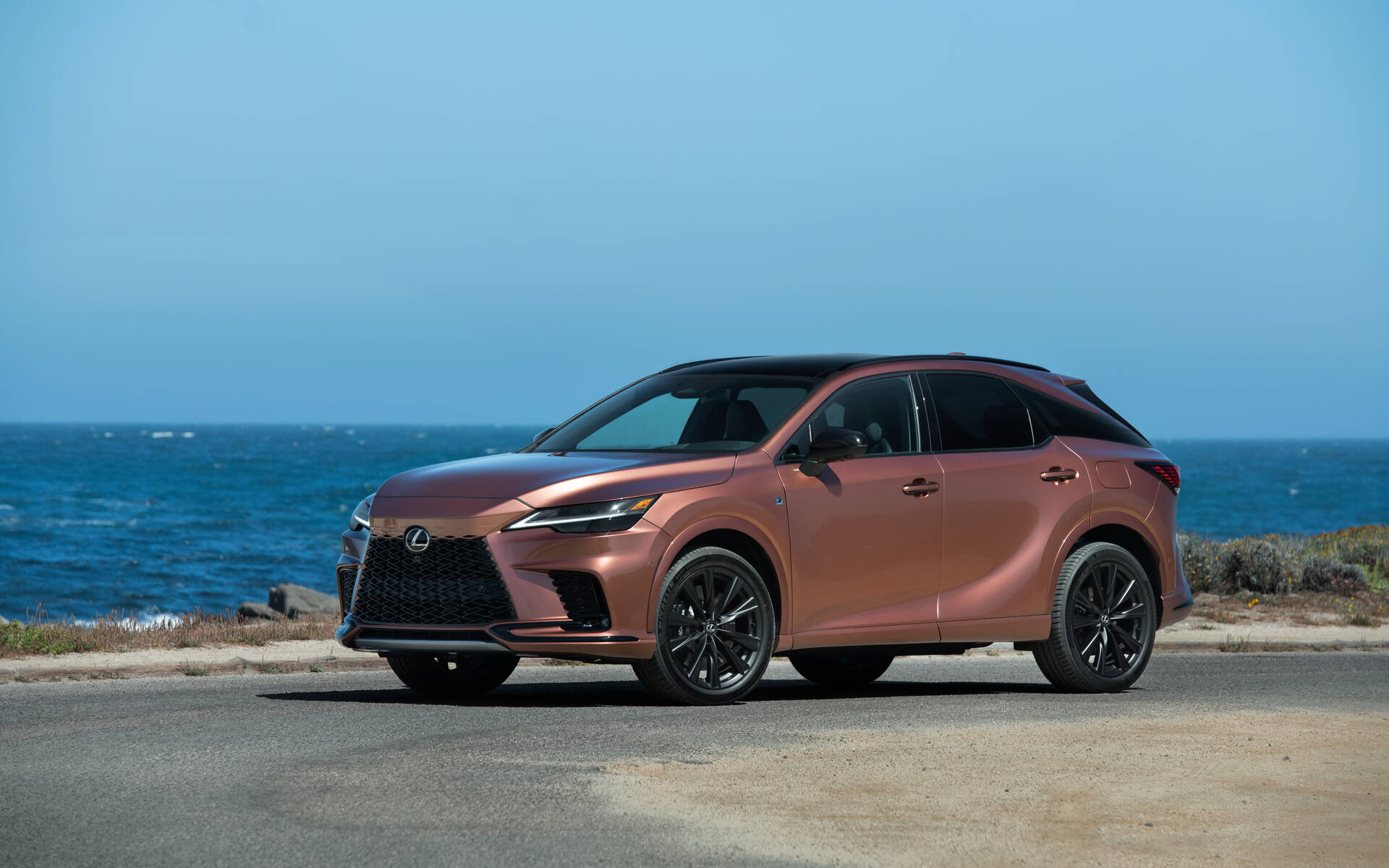2023 Lexus RX 350: Continuity Through Change

| Strong points |
|
|---|---|
| Weak points |
|
Santa Barbara, California—The 2023 model year marks the debut of the fifth-generation Lexus RX, the Japanese luxury brand’s best-selling vehicle in Canada (which happens to be its fourth largest market behind the U.S., China and Japan). Highlights include new four-cylinder engines with either a turbocharger or any number of electric motors depending on the configuration.
All 2023 RX models in Canada will come standard with all-wheel drive, with deliveries starting in November. Initially, the lineup will consist of the turbocharged RX 350 as well as the gas-electric RX 350h and RX 500h.
- Also: 2023 Lexus RX Gets Bold Styling Revisions, New PHEV Model
- Also: 2020 Lexus RX 350: Bold, Cozy, Safe
They will later be joined by the RX 450h plug-in hybrid, except we don’t know when exactly. Oh, and the three-row RX L has been axed due to poor sales. Instead, Lexus will introduce a brand new crossover likely to be called TX.

The GA-K platform underpinning the 2023 Lexus RX is derived from the Toyota RAV4 and Lexus NX. The new RX is the same overall length as its predecessor, but the wheelbase (+60 mm), width (+25 mm) and rear track (+45 mm) are all increased. The result is more space for rear passengers and a more stable ride, according to Lexus engineers. We’ll get back to that a bit later.
Beautiful Evolution
The 2023 Lexus RX looks bold yet not as polarizing as the old one. The real transformation is found inside, where the god-awful touchpad controlling the infotainment system has been replaced by a standard 9.8-inch or optional 14-inch touchscreen. It was about damn time if you ask me. Also, wireless Apple CarPlay and Android Auto is included, while the cabin is more accommodating especially in the rear, as mentioned above.
Despite the rear track being wider, the new RX isn’t really more agile on the road. During our first drive in California, it proved smooth and quiet, but sporty? A big no. While the turbo-four keeps a fairly low profile in normal driving, it tends to complain when you apply force to the throttle. In terms of handling, the vehicle doesn’t like to be rushed in corners and clearly is more focused on delivering a comfortable ride.

Powertrain Diversity
The base RX 350 combines a turbocharged 2.4-litre engine with an eight-speed automatic transmission and FWD-biased all-wheel drive system. Torque distribution can shift to an even 50-50 when necessary. Pretty conventional stuff.
The three hybrid models, which will definitely prove more popular among customers, each feature a different powertrain. The RX 350h uses a 2.5-litre Atkinson-cycle engine mated to a CVT and electric motor, the latter driving the rear wheels. Combined output is 246 horsepower and 233 pound-feet of torque—far below the RX 350’s 275 horsepower and 317 pound-feet.
The RX 450h coming at a later date is probably the most interesting of the bunch. The powertrain is basically the same except for the larger 18.1kWh battery (also used by the Toyota RAV4 Prime). This enables over 50 kilometres of zero-emission range, Lexus says. Alas, our test drive in California was much too short to validate that number.

At the top of the lineup sits the new RX 500h. Featuring the turbo-four engine in addition to electric drive, this one generates 366 horsepower and 406 pound-feet of torque. It’s by far the model that proved the most satisfying, with four-wheel steering and a firmer adaptive suspension taking on-road dynamics to another level. Balance is improved with the electric AWD system reducing weight transfers under hard braking and acceleration.
At the end of the day, the redesigned 2023 Lexus RX maintains continuity through change as it sticks to the core philosophy of delivering a smooth and safe driving experience. Build quality and reliability are expected to remain excellent, too. Canadian pricing starts at $58,650 for the RX 350, $60,150 for the RX 350h, and $79,800 for the RX 500h.











